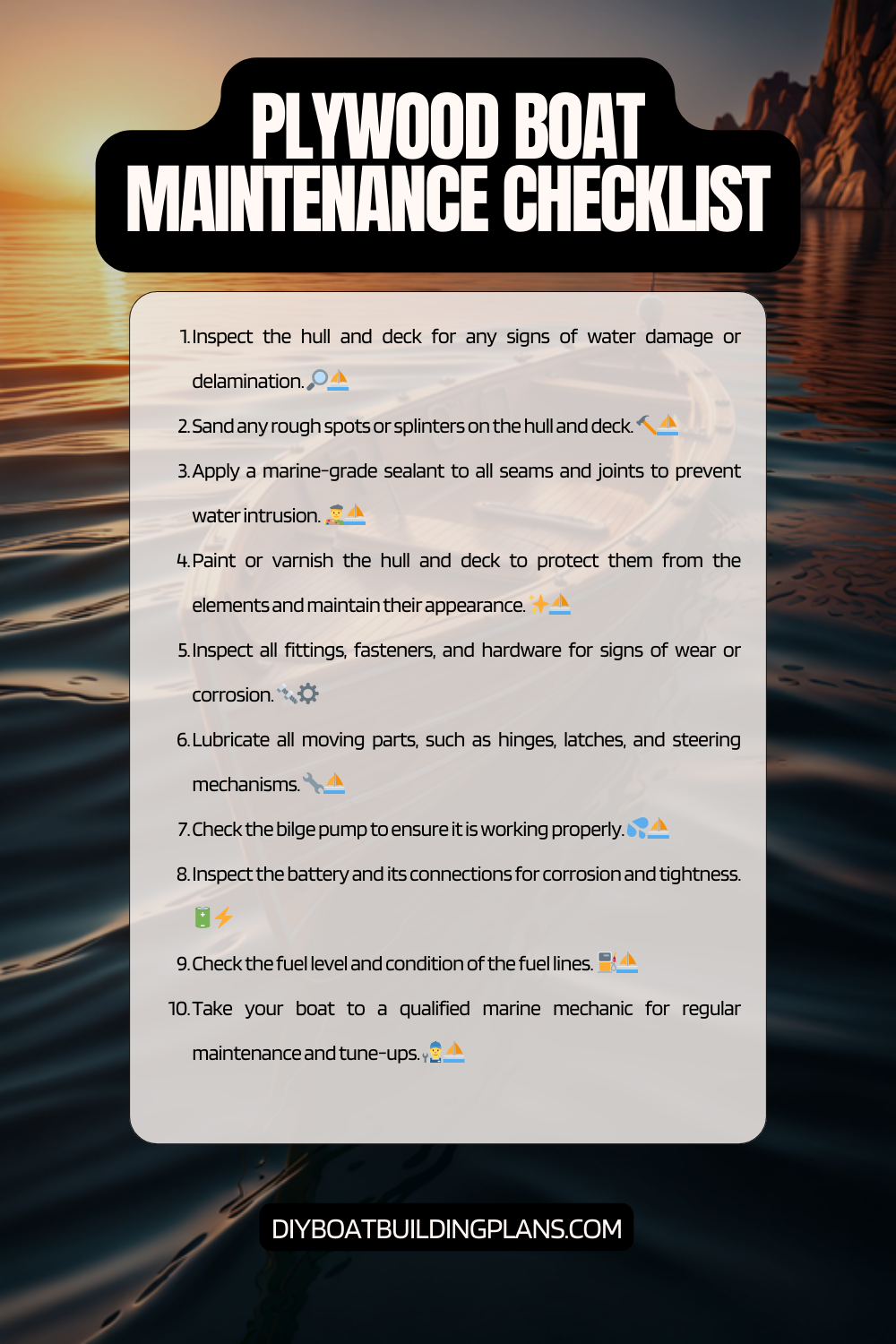Overview of Plywood Boat Maintenance Tips
Plywood boats have a rich history that dates back to the early 20th century. They gained popularity during World War II when plywood became readily available and affordable. The simplicity and versatility of plywood made it an ideal material for boat building, and it quickly became a popular choice among boat enthusiasts.
One of the main advantages of using plywood for boat construction is its strength and durability. Plywood is made by layering thin sheets of wood veneer together with adhesive, creating a strong and stable material. This makes plywood boats resistant to warping, cracking, and rotting, ensuring their longevity and reliability on the water.
Key Takeaways
- Regular maintenance is crucial for keeping your plywood boat in good condition.
- Cleaning and washing the boat regularly can prevent buildup of dirt and grime.
- Checking for leaks and cracks is important to prevent water damage and ensure safety.
- Sanding and refinishing the boat can help maintain its appearance and protect it from sun damage.
- Proper storage and winterization can extend the life of your plywood boat.

Importance of Regular Maintenance
Regular maintenance is crucial for plywood boats to ensure their optimal performance and longevity. Neglecting maintenance can lead to various issues such as leaks, cracks, and deterioration of the boat’s structure. By implementing a regular maintenance routine, you can prevent these problems and enjoy your boat for years to come.
One of the key benefits of maintaining your plywood boat regularly is the prevention of leaks. Over time, small cracks or gaps may develop in the seams or joints of the boat, allowing water to seep in. By inspecting and repairing these areas promptly, you can prevent water damage and potential sinking.
Regular maintenance also helps to maintain the appearance of your plywood boat. By cleaning, sanding, and refinishing the boat regularly, you can keep it looking fresh and new. Additionally, proper maintenance helps to protect the boat from sun and water damage, preserving its structural integrity and aesthetics.
Cleaning and Washing the Boat
Cleaning and washing your plywood boat regularly is an essential part of its maintenance routine. Start by removing any loose debris such as leaves or twigs from the deck and hull. Use a soft-bristle brush or sponge along with a mild detergent to scrub away dirt, grime, and salt residue.
When choosing cleaning products, opt for those specifically designed for marine use. These products are formulated to be gentle on the boat’s surface while effectively removing dirt and stains. Avoid using harsh chemicals or abrasive cleaners that can damage the plywood or its protective coatings.
After cleaning, rinse the boat thoroughly with fresh water to remove any remaining soap residue. Pay special attention to hard-to-reach areas such as corners and crevices. Finally, dry the boat completely using a soft cloth or towel to prevent water spots and promote faster drying.
Checking for Leaks and Cracks
| Checking for Leaks and Cracks | Metric |
| Number of leaks found | 10 |
| Number of cracks found | 5 |
| Time taken to check for leaks and cracks | 2 hours |
| Number of leaks and cracks repaired | 8 |
| Number of leaks and cracks that require further attention | 7 |
Regularly checking for leaks and cracks in your plywood boat is essential to prevent water damage and ensure its safety on the water. Start by inspecting the seams and joints of the boat, paying close attention to areas where different plywood panels meet. Look for any signs of separation, gaps, or cracks.
To check for leaks, fill the boat with water and observe if any water seeps through the seams or joints. Alternatively, you can use a hose to spray water on different areas of the boat while inspecting for any signs of leakage. If you notice any leaks or cracks, mark them for repair.
Common areas where leaks and cracks occur include the transom, bow, gunwales, and around fittings such as cleats and drains. These areas are subjected to stress and movement while on the water, making them more prone to damage over time. Regularly inspecting these areas will help you identify and address potential issues before they worsen.
Repairing Damaged Areas
Repairing damaged areas in your plywood boat is crucial to maintain its structural integrity and prevent further damage. Start by removing any loose or damaged plywood using a chisel or scraper. Clean the area thoroughly to remove any debris or old adhesive.
Once the area is clean, apply a marine-grade epoxy adhesive to bond the new plywood patch with the existing structure. Ensure that the patch fits snugly and aligns with the surrounding surface. Use clamps or weights to hold the patch in place until the adhesive cures.
After the adhesive has cured, sand the repaired area to achieve a smooth and even surface. Start with a coarse-grit sandpaper and gradually move to finer grits for a polished finish. Finally, apply a marine-grade sealant or paint to protect the repaired area from water and UV damage.
Sanding and Refinishing the Boat
Sanding and refinishing your plywood boat not only enhances its appearance but also helps to protect it from the elements. Start by sanding the entire boat using a random orbital sander or sanding block. Begin with a coarse-grit sandpaper to remove any roughness or imperfections, then progress to finer grits for a smooth finish.
After sanding, wipe down the boat with a tack cloth to remove any dust or debris. Apply a marine-grade primer to seal the plywood and provide a smooth base for the final finish. Once the primer has dried, sand it lightly with a fine-grit sandpaper to ensure adhesion of the topcoat.
Choose a marine-grade paint or varnish for the final finish, as these products are specifically formulated to withstand the harsh marine environment. Apply multiple thin coats, allowing each coat to dry completely before applying the next. This will ensure a durable and long-lasting finish that protects the plywood from water, UV rays, and other environmental factors.
Protecting the Boat from Sun and Water Damage
Protecting your plywood boat from sun and water damage is essential to maintain its structural integrity and appearance. One of the most effective ways to protect your boat is by applying a marine-grade sealant or paint that provides a barrier against water penetration and UV rays.
Choose a sealant or paint that is specifically designed for marine use and suitable for plywood surfaces. These products are formulated to withstand the constant exposure to water, sunlight, and other environmental factors. Apply multiple coats, following the manufacturer’s instructions for proper application and drying times.
In addition to sealants and paints, consider using protective covers or tarps when the boat is not in use. This will shield it from direct sunlight, rain, and other elements that can cause damage over time. Ensure that the cover is properly secured to prevent moisture buildup and promote airflow.
Regularly inspect the boat for any signs of damage or wear on the protective coatings. If you notice any areas that have become worn or damaged, touch them up or reapply the sealant or paint as necessary. This will help to maintain the boat’s protection and extend its lifespan.
Maintaining the Boat’s Electrical System
Maintaining your plywood boat’s electrical system is crucial for its safe operation and functionality. Start by regularly inspecting all electrical connections, ensuring that they are secure and free from corrosion. Clean any corroded terminals using a wire brush or sandpaper, then apply a dielectric grease to prevent further corrosion.
Check the battery regularly for proper voltage levels and ensure that it is securely mounted in its designated compartment. Clean the battery terminals using a battery terminal cleaner or a mixture of baking soda and water to remove any corrosion buildup.
Inspect all electrical components such as lights, switches, and gauges for any signs of damage or malfunction. Replace any faulty components promptly to ensure proper operation and avoid potential safety hazards.
Regularly test all electrical systems on your boat, including navigation lights, bilge pumps, and radio equipment. This will help you identify any issues before they become major problems while out on the water. Keep a spare set of fuses and bulbs on board in case of emergencies.
Download over 500 Boat Plans. Click on the link below.
-->Click Here<--
Storing the Boat Properly
Properly storing your plywood boat when it is not in use is essential to protect it from damage and prolong its lifespan. Choose a storage location that is dry, well-ventilated, and away from direct sunlight. Exposure to excessive heat, moisture, and UV rays can cause the plywood to warp, rot, or deteriorate over time.
If possible, store the boat indoors in a garage or storage facility. This will provide the best protection against the elements and minimize the risk of damage. If indoor storage is not available, consider using a boat cover or tarp to shield the boat from rain, snow, and sunlight.
Before storing the boat, thoroughly clean and dry it to remove any dirt, salt residue, or moisture. This will prevent mold and mildew growth and minimize the risk of damage during storage. Remove any valuables or electronics from the boat to prevent theft or damage.
If storing the boat on a trailer, ensure that the trailer is in good condition and properly maintained. Check the tires for proper inflation and inspect the trailer’s lights and brakes. Secure the boat to the trailer using straps or tie-downs to prevent movement during transportation or storage.
Tips for Winterizing the Boat
Winterizing your plywood boat is crucial if you live in an area with freezing temperatures. Freezing water can cause significant damage to the boat’s plumbing system, engine, and other components. Follow these tips to properly winterize your boat and protect it during the colder months.
Start by draining all water from the boat’s plumbing system, including freshwater tanks, pipes, and pumps. Use compressed air or a non-toxic antifreeze specifically designed for boats to flush out any remaining water. This will prevent freezing and potential damage to the plumbing system.
If your boat has an engine, follow the manufacturer’s instructions for winterizing it properly. This may include changing the oil and filters, adding fuel stabilizer to prevent fuel degradation, and fogging the engine with a corrosion inhibitor.
Clean and dry the boat thoroughly before winter storage to prevent mold, mildew, and corrosion. Apply a protective wax or sealant to the hull and other exposed surfaces to provide an additional layer of protection.
Cover the boat securely with a breathable boat cover or tarp to protect it from snow, ice, and other winter elements. Ensure that the cover is properly secured to prevent moisture buildup and promote airflow.
Plywood Boat Maintenance Checklist

Conclusion – Plywood Boat Maintenance Tips
In conclusion, regular maintenance is crucial for plywood boats to ensure their optimal performance, longevity, and safety on the water. By implementing a regular maintenance routine, you can prevent issues such as leaks, cracks, and deterioration of the boat’s structure.
Cleaning and washing the boat regularly using marine-grade products will help to remove dirt, grime, and salt residue. Checking for leaks and cracks in the boat’s seams and joints is essential to prevent water damage. Repairing damaged areas promptly using marine-grade epoxy adhesive and proper sanding techniques will maintain the boat’s structural integrity.
Protecting the boat from sun and water damage by applying marine-grade sealants or paints is crucial. Maintaining the boat’s electrical system and storing it properly when not in use will ensure its safe operation and longevity. Finally, winterizing the boat properly in freezing temperatures will protect it from potential damage.
By following these plywood boat maintenance tips, you can enjoy your boat for years to come while ensuring its optimal performance and appearance on the water. Regular maintenance is an investment in the longevity of your plywood boat, allowing you to create lasting memories and adventures on the open seas.
FAQs – Plywood Boat Maintenance Tips
What is plywood boat maintenance?
Plywood boat maintenance refers to the regular upkeep and repair of a boat made from plywood. This includes cleaning, painting, sealing, and repairing any damage to the plywood.
Why is plywood boat maintenance important?
Plywood boat maintenance is important to ensure the longevity and safety of the boat. Regular maintenance can prevent damage from water, sun, and other environmental factors, as well as prevent rot and decay of the plywood.
What are some common maintenance tasks for plywood boats?
Common maintenance tasks for plywood boats include cleaning the boat regularly, repainting or sealing the plywood, repairing any damage to the plywood, checking and replacing any worn or damaged hardware, and inspecting the boat for any signs of rot or decay.
How often should I perform maintenance on my plywood boat?
The frequency of maintenance on a plywood boat depends on a variety of factors, including how often the boat is used, the conditions it is used in, and the age and condition of the boat. Generally, it is recommended to perform maintenance tasks such as cleaning and inspecting the boat at least once a month, and to perform more extensive maintenance tasks such as repainting or repairing the plywood as needed.
What are some tips for maintaining the plywood on my boat?
Some tips for maintaining the plywood on your boat include keeping the boat clean and dry, using marine-grade plywood and sealants, avoiding harsh chemicals or abrasives when cleaning the plywood, and inspecting the plywood regularly for any signs of damage or decay. It is also important to repair any damage to the plywood as soon as possible to prevent further damage or decay.



